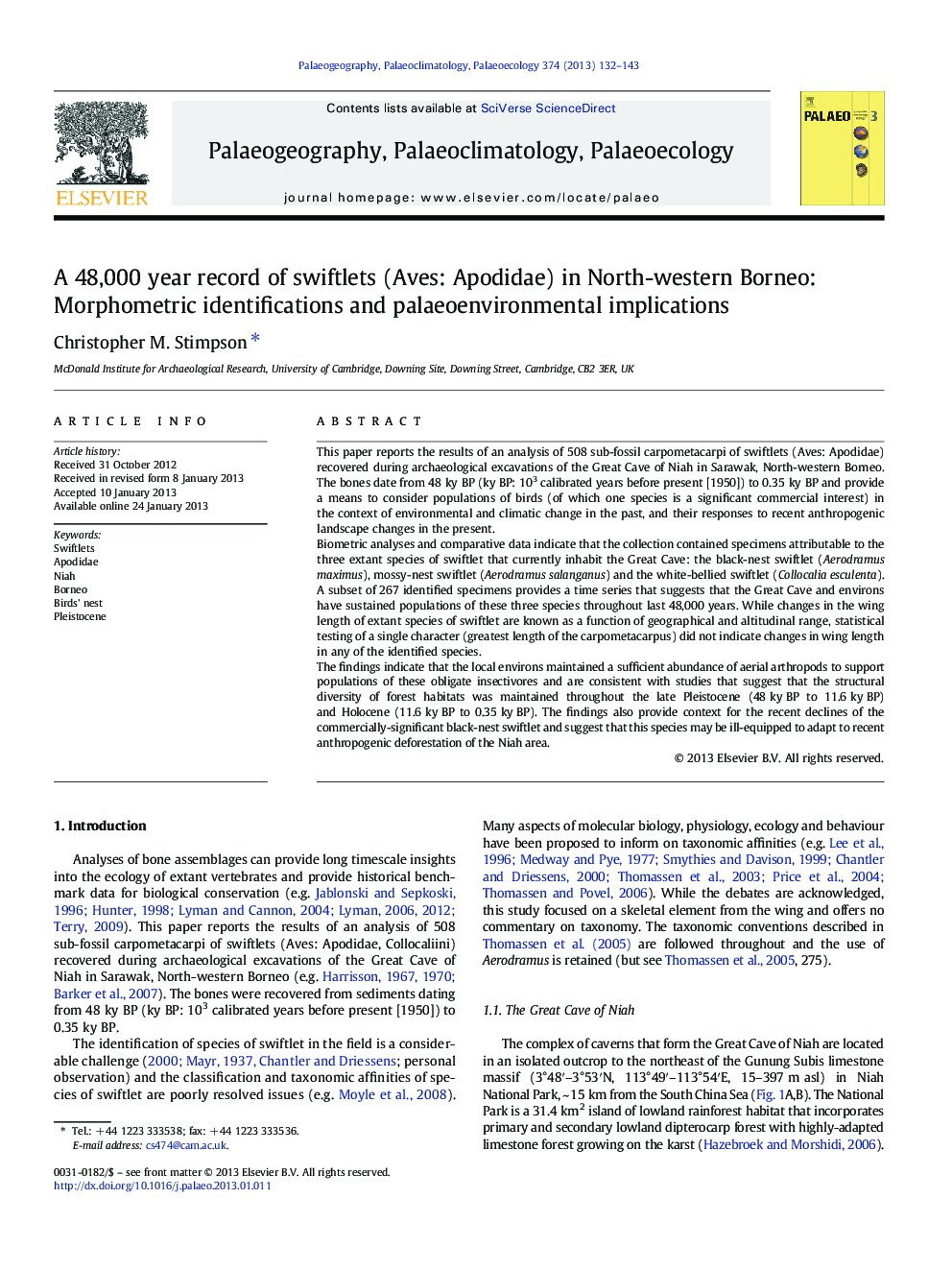| کد مقاله | کد نشریه | سال انتشار | مقاله انگلیسی | نسخه تمام متن |
|---|---|---|---|---|
| 6350408 | 1622212 | 2013 | 12 صفحه PDF | دانلود رایگان |

This paper reports the results of an analysis of 508 sub-fossil carpometacarpi of swiftlets (Aves: Apodidae) recovered during archaeological excavations of the Great Cave of Niah in Sarawak, North-western Borneo. The bones date from 48 ky BP (ky BP: 103 calibrated years before present [1950]) to 0.35 ky BP and provide a means to consider populations of birds (of which one species is a significant commercial interest) in the context of environmental and climatic change in the past, and their responses to recent anthropogenic landscape changes in the present.Biometric analyses and comparative data indicate that the collection contained specimens attributable to the three extant species of swiftlet that currently inhabit the Great Cave: the black-nest swiftlet (Aerodramus maximus), mossy-nest swiftlet (Aerodramus salanganus) and the white-bellied swiftlet (Collocalia esculenta). A subset of 267 identified specimens provides a time series that suggests that the Great Cave and environs have sustained populations of these three species throughout last 48,000 years. While changes in the wing length of extant species of swiftlet are known as a function of geographical and altitudinal range, statistical testing of a single character (greatest length of the carpometacarpus) did not indicate changes in wing length in any of the identified species.The findings indicate that the local environs maintained a sufficient abundance of aerial arthropods to support populations of these obligate insectivores and are consistent with studies that suggest that the structural diversity of forest habitats was maintained throughout the late Pleistocene (48 ky BP to 11.6 ky BP) and Holocene (11.6 ky BP to 0.35 ky BP). The findings also provide context for the recent declines of the commercially-significant black-nest swiftlet and suggest that this species may be ill-equipped to adapt to recent anthropogenic deforestation of the Niah area.
⺠508 sub-fossil carpometacarpi of swiftlets dated 0.35-48 ky BP were identified. ⺠Three extant species of swiftlet have been present in the cave for 48,000 years. ⺠No evidence of changes in wing length was found. ⺠Species ecology suggests that forest habitats persisted in the late Pleistocene. ⺠Black-nest swiftlets may be ill-equipped to adapt to anthropogenic deforestation.
Journal: Palaeogeography, Palaeoclimatology, Palaeoecology - Volume 374, 15 March 2013, Pages 132-143